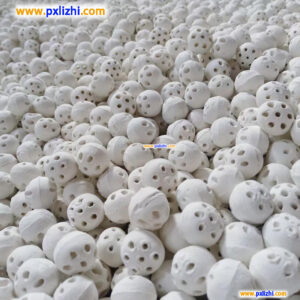
# Alumina Ceramic Ball: Properties and Applications
## Introduction to Alumina Ceramic Balls
Alumina ceramic balls are high-performance industrial components made from aluminum oxide (Al₂O₃). These precision-engineered spheres have become essential in various industries due to their exceptional mechanical, thermal, and chemical properties. With alumina content typically ranging from 90% to 99.9%, these ceramic balls offer superior performance compared to traditional metal balls in many applications.
## Key Properties of Alumina Ceramic Balls
### 1. Exceptional Hardness and Wear Resistance
Alumina ceramic balls boast a Mohs hardness of 9, second only to diamond. This extreme hardness makes them highly resistant to wear, even under continuous friction and mechanical stress. Their wear resistance is approximately 10 times greater than that of steel balls in similar applications.
### 2. Outstanding Thermal Stability
These ceramic balls maintain their structural integrity at temperatures up to 1,600°C (2,912°F), making them ideal for high-temperature environments where metal balls would deform or melt. Their low thermal expansion coefficient ensures dimensional stability across wide temperature ranges.
### 3. Superior Chemical Inertness
Alumina ceramic balls demonstrate excellent resistance to most acids, alkalis, and organic solvents. They won’t corrode or react with most chemicals, unlike metal alternatives that may oxidize or degrade in harsh chemical environments.
### 4. Electrical Insulation Properties
With high electrical resistivity (10¹⁴-10¹⁵ Ω·cm), alumina ceramic balls serve as excellent electrical insulators. This property makes them valuable in electronic and electrical applications where conductivity must be avoided.
### 5. Low Density and High Strength
Despite their impressive strength, alumina ceramic balls have a relatively low density (3.6-3.9 g/cm³), about half that of steel. This combination of lightness and strength reduces centrifugal forces in rotating applications while maintaining durability.
## Common Applications of Alumina Ceramic Balls
### 1. Bearing Systems
Alumina ceramic balls are widely used in hybrid and full ceramic bearings for applications requiring:
– High-speed operation
– Corrosion resistance
– Non-magnetic properties
– Operation in extreme temperatures
These bearings are found in aerospace, medical equipment, and high-performance machinery.
### 2. Grinding and Milling Media
In the pharmaceutical, paint, and ceramic industries, alumina balls serve as grinding media in ball mills due to their:
– High density for effective grinding
– Wear resistance for long service life
– Chemical purity that prevents contamination
Keyword: alumina ceramic ball
### 3. Valve Components
The chemical and petrochemical industries utilize alumina ceramic balls in valve systems because they:
– Resist corrosion from aggressive media
– Maintain sealing integrity under high pressure
– Withstand abrasive particle flows
### 4. Semiconductor Manufacturing
In cleanroom environments, alumina ceramic balls are used in:
– Wafer handling systems
– Precision positioning devices
– Vacuum chamber components
Their non-contaminating properties and electrical insulation are particularly valuable in these applications.
### 5. Textile and Paper Industries
Alumina ceramic balls find use in thread guides, rollers, and other components where their:
– Smooth surface reduces friction
– Wear resistance extends component life
– Chemical inertness prevents reaction with processing chemicals
## Choosing the Right Alumina Ceramic Ball
When selecting alumina ceramic balls for specific applications, consider these factors:
– Alumina content (90%, 95%, 99%, or 99.9%)
– Diameter and dimensional tolerances
– Surface finish requirements
– Specific mechanical or thermal performance needs
– Regulatory compliance (FDA, USP, etc. for certain industries)
Higher alumina content generally means better performance but at increased cost, so balancing requirements with budget is essential.
## Maintenance and Handling Considerations
While alumina ceramic balls are highly durable, proper handling can maximize their lifespan:
– Avoid impact loading that could cause brittle fracture